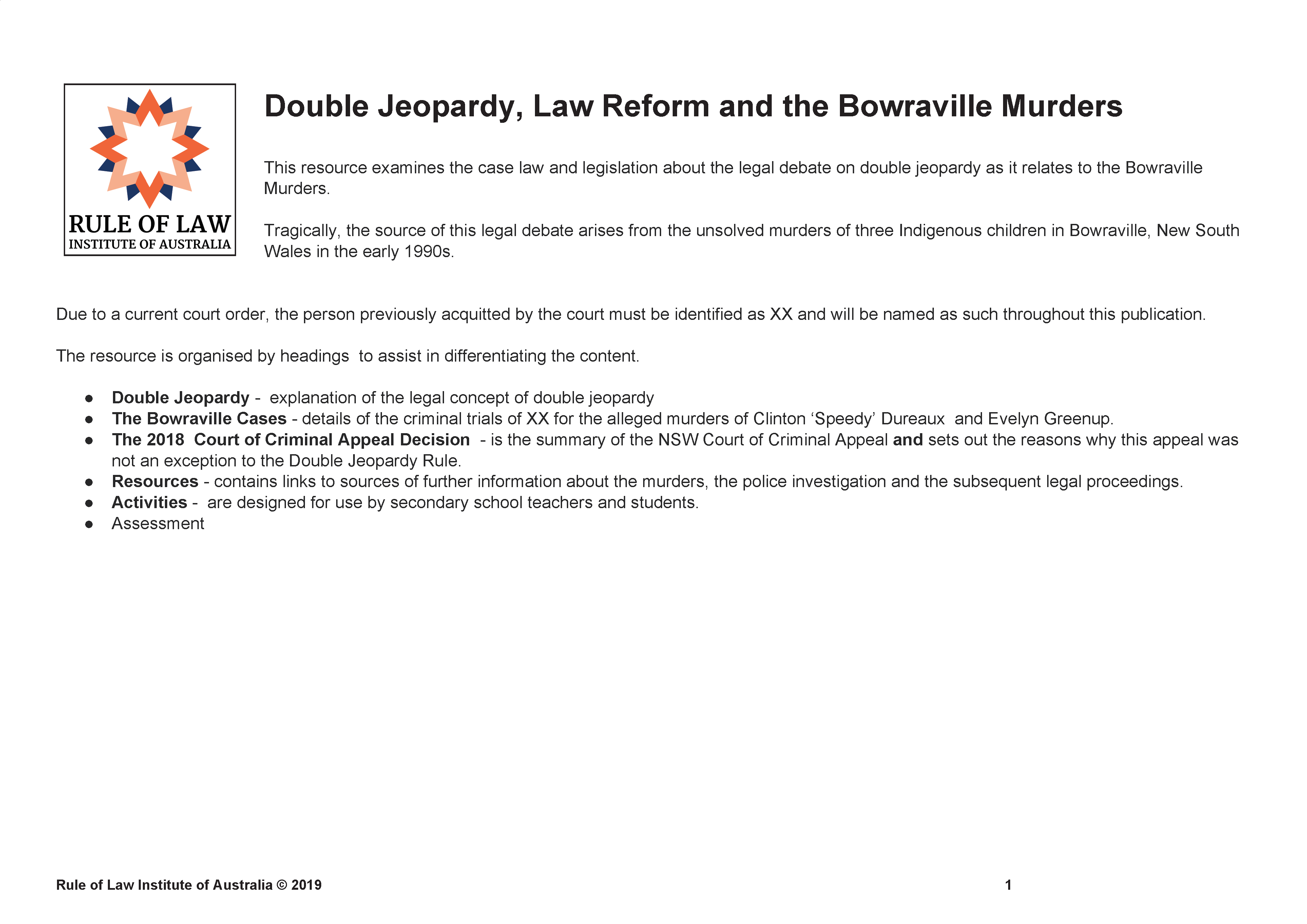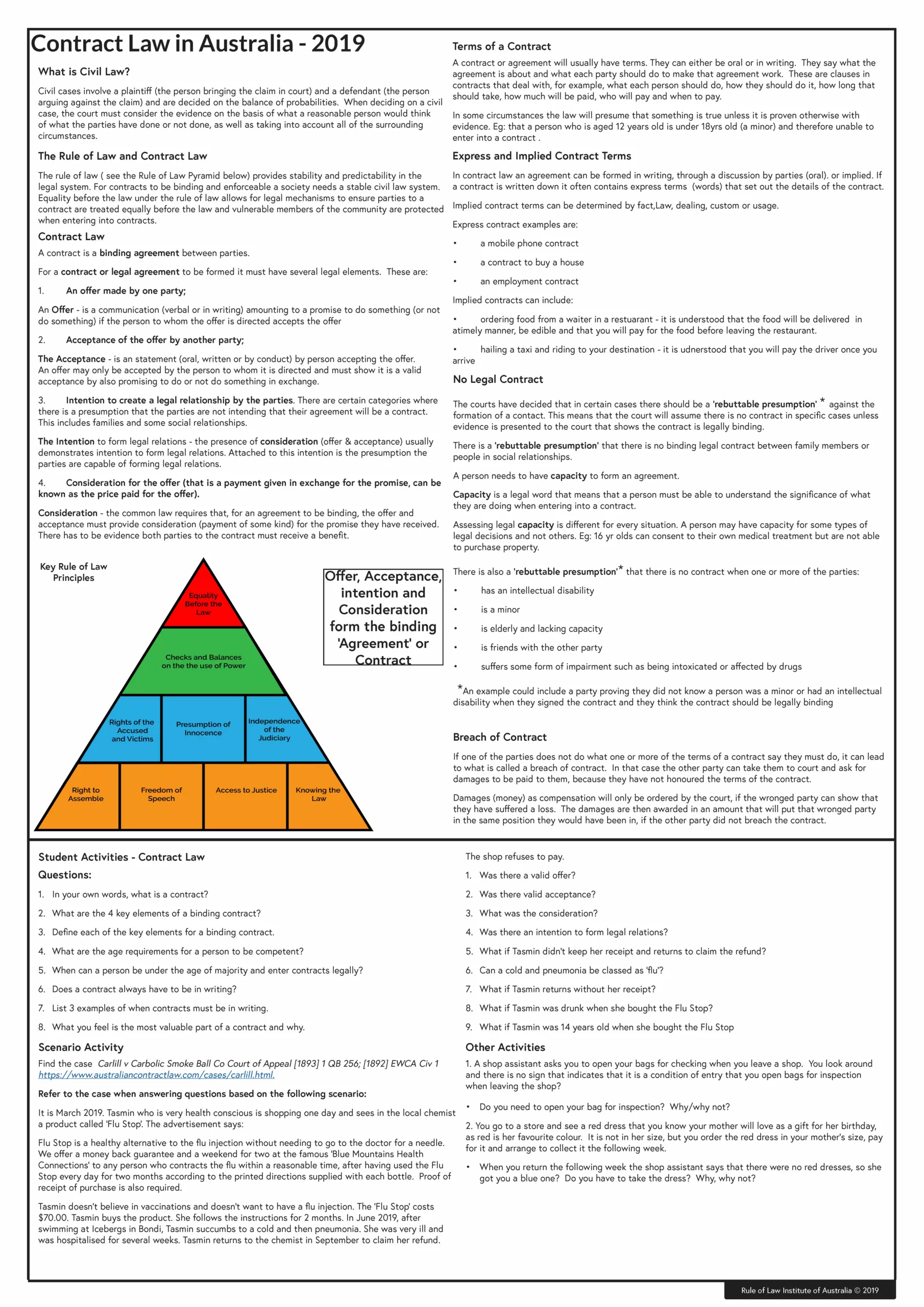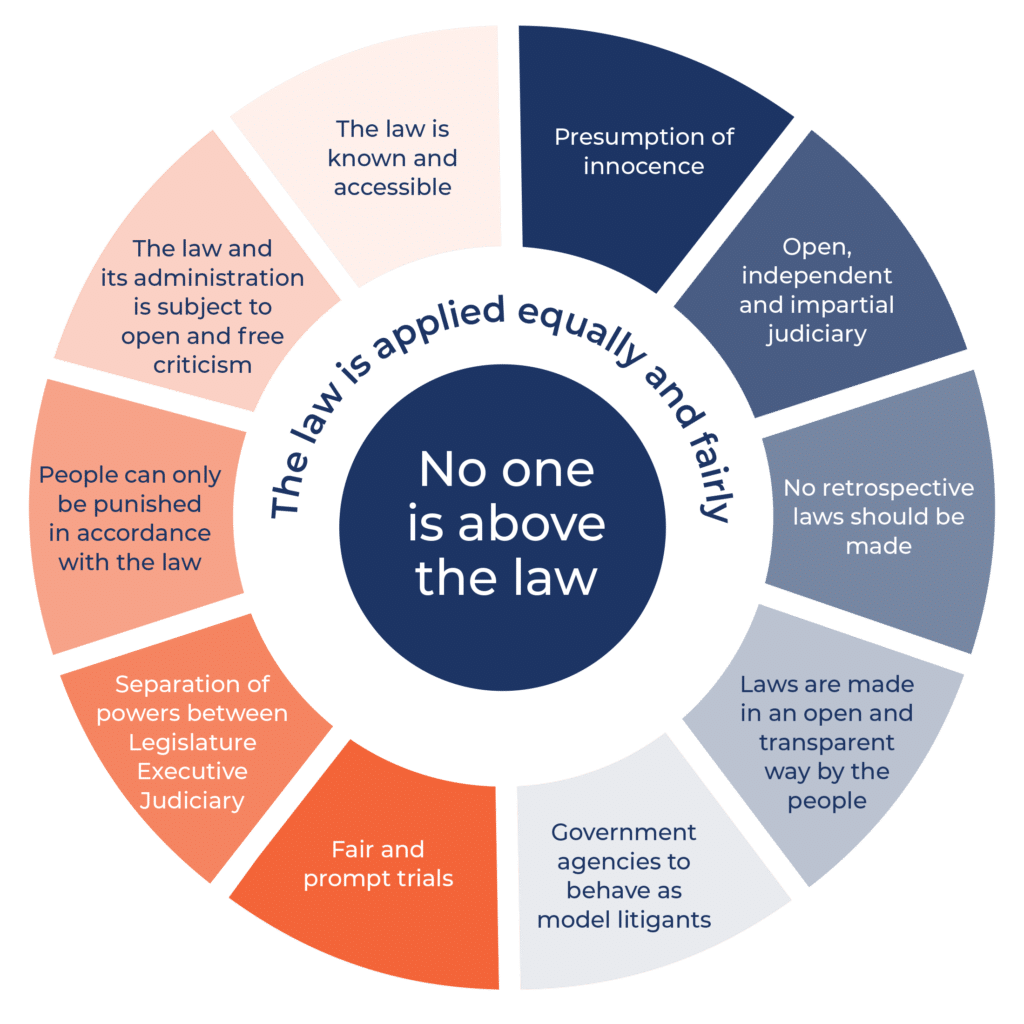The Bowraville Murders
This is a 2019 update and examines the case law and legislation about the legal debate on double jeopardy as it relates to the Bowraville Murders.
To download the Unit of Work for teachers and Student Resource please have click on the Activities tab.
Tragically, the source of this legal debate arises from the unsolved murders of three Indigenous children in Bowraville, New South Wales in the early 1990s.
Due to a current court order, the person previously acquitted by the court must be identified as XX and will be named as such throughout this publication.
The blog is organised by tabs to assist in navigation.
- Double Jeopardy tab – explanation of the legal concept of double jeopardy
- Previous cases – details of the criminal trials of XX for the alleged murders of Clinton ‘Speedy’ Dureaux and Evelyn Greenup.
- 2018 Decision – is the summary of the NSW Court of Criminal Appeal and sets out the reasons why this appeal was not an exception to the Double Jeopardy Rule.
- Resources contains links to sources of further information about the murders, the police investigation and the subsequent legal proceedings.
- Activities tabs is designed for use by secondary school teachers and students.
NSW Chief Justice Tom Bathurst in his delivery of the final judgement described the deaths as “tragedies” for the families and the Bowraville community and went onto to say.
“We recognise the stress that the deaths of these children and the subsequent investigations have caused the families involved,” he said.
“We know that that grief and loss remains fresh in your minds.” ABC News
Double Jeopardy
What is double jeopardy
‘Double jeopardy’ is found in legal systems around the world, including in Australia, England and America.
The double jeopardy rule exists to prevent a person from being sent to trial again, if they have already been found not guilty on the facts of that case.
In 1994 XX was tried and found not guilty of murdering 15 year old Clinton Speedy-Duroux.
In 2006, XX was tried and found not guilty of the murder of 4 year old Evelyn Greenup.
Double Jeopardy and Law Reform
Protections against double jeopardy are important to the rule of law. Cases have arisen, however, where the rule has led to a perception that a person ought to have been tried again but could not be, due to the double jeopardy rule. This has usually occurred, because new factual information has come to light, suggesting that person’s involvement in the crime.
In 2001 Lord Justice Robin Auld, summed up concerns about the double jeopardy rule in a report into a review of UK criminal courts, which included concerns about double jeopardy:
If there is compelling evidence… that an acquitted person is after all guilty of a serious offence, then, subject to stringent safeguards…, what basis in logic or justice can there be for preventing proof of that criminality? And what of the public confidence in a system that allows it to happen?
In Australia, for more than a decade, various jurisdictions have unsuccessfully challenged the double jeopardy rule.
In the 2002 case of R v Carroll [2002] HCA 55 the High Court found that the Queensland Government’s attempt to try Raymond Carroll for perjury was a breach of the rule against double jeopardy. Perjury is an offence that occurs when a person gives untruthful evidence in court.
The prosecution alleged in the perjury proceedings, that Mr Carroll’s testimony in his previous murder trial, for which he had already been acquitted, was untruthful.
The Court found the perjury proceedings were “vexatious and oppressive”. It found that they amounted to an attempt to try him again for that murder and were an infringement of the rule against double jeopardy.
In 2003, the Carr Labor Government released the Criminal Appeal Amendment (Double Jeopardy) Bill 2003 (NSW) which sought to change the rule on double jeopardy. This Bill was intended to amend the Criminal Appeal Act 1912 (NSW) to allow a person to be retried for an offence if there was “fresh and compelling evidence of guilt.” This change was in line with UK legislation that had been introduced earlier the same year. The Carr Government’s Bill was debated in NSW Parliament committees, and discussed at federal level, but was ultimately not passed.
In 2006, the Carr Labor Government tried again, by introducing the Crimes (Appeal and Review) Amendment (Double Jeopardy) Bill 2006, which was an attempt to amend the Crimes (Appeal and Review) Act 2001 (NSW). These amendments were substantially the same as those floated back in 2003.
The Crimes (Appeal and Review) Amendment (Double Jeopardy) Bill 2006 was passed by Parliament, which amended the Crimes (Appeal and Review) Act 2001. The Bowraville murders were mentioned by a number of parliamentarians during the debate on amendments to that Act.
Principally, the amended Crimes (Appeal and Review) Act 2001 (“CARA”) now provides in section 100, that:
(1) The Court of Criminal Appeal may, on the application of the Director of Public Prosecutions, order an acquitted person to be retried for a life sentence offence if satisfied that:
(a) there is fresh and compelling evidence against the acquitted person in relation
to the offence, and
(b) in all the circumstances it is in the interests of justice for the order to be
made.
The meaning of the words “fresh” and “compelling” are defined in section 102 of the Act.
In 2015, the Honourable James Wood AO QC, former NSW Supreme Court justice and former chairman of the NSW Law Reform Commission, was asked to prepare a report on whether section 102 of the Act, which defines “fresh” and “compelling” evidence, should be amended. Mr Wood concluded that it should not be, because of concerns that the amendments would significantly undermine protections against double jeopardy.
After Mr Wood handed down his report, David Shoebridge, the Greens member of the NSW Legislative Council, introduced the Crimes (Appeal and Review) Amendment (Double Jeopardy) Bill 2015, which would have amended the Crimes (Appeal and Review) Act 2001 to allow previously inadmissible, but now admissible, evidence to count as “fresh” evidence. This Bill failed to pass in the NSW Parliament.
This means that any cases the prosecution seeks to argue should be an exception to the double jeopardy rule, must still be dealt with under sections 100 and 102 of the Crimes (Appeal and Review) Act 2001 (NSW).
PREVIOUS CASES
In late 1990 and 1991 Colleen Walker, Evelyn Greenup and Clinton ‘Speedy’ Duroux disappeared from the town Bowraville, on the NSW Mid North Coast. XX was tried and acquitted of murdering 4-year-old Evelyn Greenup and 16-year-old Clinton Speedy-Duroux.
Under the rules of the Evidence Act 1995 (NSW) at the time, the two trials were required to be heard separately.
No person has been tried for the murder of Colleen Walker.
THE APPLICATION FOR RETRIAL
The Aboriginal Community of Bowraviile has long pushed for XX to be re-tried for the murders of Evelyn Greenup and Clinton Speedy-Duroux and to be tried for the murder of Colleen Walker. The rule on double jeopardy has been a legal hurdle to these cases proceeding.
In 2016, in the wake of ongoing changes to the Evidence Act 1995 (NSW) regarding the nature of evidence that is admissible at trial, NSW Attorney-General Gabrielle Upton announced she would make an application for retrial.
The application was for a retrial of XX for the murders of Clinton ‘Speedy’ Duroux and Evelyn Greenup as well as well as a trial of XX for the murder of Colleen Walker. The Attorney General applied to have all three trials heard together and for the evidence in one to be evidence in the others.
The application by the Attorney General was made on the basis that:
If the evidence in relation each of the three murders was considered by a jury at a single trial, that evidence, which allegedly showed that there were similarities in the circumstances of each murder, would indicate that each of the children was murdered by the respondent. (headnote)
Despite these concerns, and the long history of previous Attorneys-General refusing to make applications for a retrial, Ms Upton applied to the NSW Court of Criminal Appeal for Mr XX’s acquittals to be quashed. The hearings occurred in November and December 2017. The Court of Criminal Appeal brought down their judgement on the 13th of September 2018. This is discussed in the ‘2018 Decision’ tab of this blog.
Court of Criminal Appeal Decision
On the 16th of December 2016 the Attorney General (AG) of NSW made an application to the Court of Criminal Appeal for orders. The AG wanted the court to allow XX to be retried in a single trial for the murders of Clinton Speedy, Evelyn Greenup and and including a indictment for the murder of Colleen Walker. On the 13th of September 2018 the Court of Criminal Appeal brought down it’s decision in the case of Attorney General for New South Wales v XX [2018] NSWCCA 198.
The Court’s Decision
In the Judgment the Court considered the question of fresh and compelling evidence under s 102 CARA. This section reads:
(2) Evidence is fresh if:
(a) it was not adduced in the proceedings in which the person was acquitted, and
(b) it could not have been adduced in those proceedings with the exercise of reasonable diligence.
Section 102(3) of CARA provides that:
(3) Evidence is compelling if:
(a) it is reliable, and
(b) it is substantial, and
(c) in the context of the issues in dispute in the proceedings in which the person was acquitted, it is highly probative of the case against the acquitted person.
The most important evidence that the Attorney General alleged was ‘fresh’ was in relation to the murder of Colleen Walker, most of which had not been admitted into evidence in either of the earlier trials. The Attorney General said this evidence was also ‘compelling’, because it established similarities between each of the murders in a way that would not have been possible with only the evidence from the two other murders. (headnote)
Specifically, the evidence put before the Court by the Attorney General as being ‘fresh’ and ‘compelling’, because it had not previously been admitted into evidence, was:
-
the alleged similarities in the factual circumstances between the death of Evelyn Greenup and Clinton Speedy-Duroux. This evidence was put before the Court by the prosecution in the 1994 trial of XX for the murder of Clinton Speedy-Duroux. However, those facts were not accepted as evidence in the 1994 trial, because of the rules regarding admissible evidence at that time.
-
further “fresh” allegations the police had uncovered over the years, including:
(a) evidence of two delivery drivers who claim they saw a white man, matching XXs description, standing over an Aboriginal teenager who was lying on the road outside Bowraville the morning Clinton disappeared.
(b) evidence from the case of Colleen Walker, because it was not relied upon or admitted in either the Speedy or Greenup trials. It was compelling because it was evidence of coincidence.
(c) evidence from four informers that XX had made admissions to them in relation to the offences.
(d) evidence from other persons that the respondent had made admissions to them about possibly being involved in the murders and/or location of bodies.
In the Judgment, the Court considered whether it was appropriate for the above alleged facts to be allowed as “fresh” and “compelling” evidence in any retrial of XX for the murders of Clinton ‘Speedy’ Duroux and Evelyn Greenup, as well as well as a trial of XX for the murder of Colleen Walker, on the basis that the three trials would all be heard together.
The Court noted that it was required, under s 105(7) of CARA, to decide if there was fresh evidence in relation to each of the offences separately.
‘Fresh’ and ‘Compelling’ Evidence
In order for a retrial to be possible under s 100 CARA, the evidence must be “fresh” under s 102(2) of CARA and “compelling” under s 102(3) of CARA.
Meaning of Fresh Evidence
-
The first test of whether evidence is ‘fresh’ is whether it has been ‘adduced’. Section 102 (2)(a) of CARA says that evidence is fresh if it was not ‘adduced’ in the proceedings, in which the person was acquitted. In his application, the Attorney General argued that, as specific factual information had not been admitted into evidence in the trial of XX for the murders of Evelyn Greenup and Clinton Speedy, it had not been adduced.
There is little guidance from previous cases on what the word ‘adduced’ means in section 102(2), and whether it includes evidence that has been put before the court (tendered) or evidence admitted in the trial.
There is usually a two-step process for evidence to become part of the facts of a trial. Firstly the evidence (say a document or item) is tendered or produced in the court for the parties and the court to consider whether it can be part of the evidence of the trial. When documents are tendered or produced to court it maintains possession of them but they do not at that point in time become evidence in the case. The judge will not look at them at that stage and the documents are often called ‘marked for identification’. Secondly, if that evidence meets the rules of evidence, it is then admitted as part of the evidence in the trial. If a document is tendered and admitted, it is then called an ‘exhibit’.
Due to the rules of evidence, when evidence is tendered, but not admitted, it is because there is a decision by the court (or by one or both of the parties) that the tendered evidence should not be included as part of the evidence of a particular criminal case.
After considering case law in Australia and England, the Second Reading speech in the NSW Parliament, as well as the report of the Honourable James Wood AO QC, the Court decided that the word ‘adduced’ meant tendered, not admitted into evidence [247]. The Court then considered the second test about whether the evidence could have been tendered in the previous proceedings, if reasonable diligence had been used [225].
-
The second test in 102(2)(b) CARA considers whether evidence could have been adduced but wasn’t, due to a lack of reasonable diligence by prosecutors.
This means the prosecution cannot say that evidence is ‘fresh’, simply because of poor investigation or decisions made not to adduce that evidence in a previous case. The Court noted that evidence will not be considered fresh just because there is a change in the rules of evidence [225], [243] and [265]. To the same extent, if evidence had previously been inadmissible, it does not automatically mean it cannot now be fresh evidence. The test is whether it was available to be adduced.
In the end the Court found that the evidence from Colleen Walker’s case had been available prior to the trial of XX for the murder of Evelyn Greenup. The evidence from informers and the other admissions had also been available [257]. None of this evidence was found to be ‘fresh’. It therefore could not be used in any retrial [256]. The only evidence that had not been available prior to the trial of XX for Evelyn’ Greenup’s murder, was in relation to statement allegedly made by XX to a journalist in 2016. The Court found that this evidence was not ‘highly probative’ as required by s 102(3)(c), as it was a denial of guilt, and also could not be used on a retrial.
Meaning of ‘Compelling’ Evidence
-
Section 102(3) looks at whether evidence is compelling. This requires the prosecution to prove that the ‘fresh’ evidence is ‘reliable’, ‘substantial’ and ‘probative’.
The Court found that each element of s 102 must be proved, that is that the evidence is both fresh and compelling [171] and [176]. That meant that if either of those elements could not be proved, the application would fail. The court found that the evidence was not fresh and that was sufficient under s 102 for the application to fail, without need for detailed consideration of whether the evidence was ‘compelling’.
All Cases to be heard as One Trial
The Attorney-General applied to the Court of Appeal for XX to be tried for all three murders in the same trial [262].
“The argument focussed critically on the unique strength of a case in which all three cases would be considered together, with evidence in relation to each murder being admissible as coincidence evidence in relation to each other murder” [264].
The Attorney General summarised the evidence as showing that; each of the children were murdered; they were murdered by the same person; and that person was XX
The Attorney General identified a number of pieces of evidence that they argued could be considered ‘fresh.’ The fresh evidence used as part of the application was found mostly from the murder of Colleen Walker. In the Attorney General’s view, once this evidence was included with that of the other two murders the ‘evidentiary matrix’ was altered [37]
This evidence allegedly included:
- XX knew Colleen Walker [39]
- Witnesses that say Colleen Walker said that XX was harassing her and she was seen talking to him [40-41]
- Other detailed evidence related to the night Colleen Walker went missing [42-46]
- Multiple sightings of Colleen Walker in a white Commodore on the night she went missing [51]
- Witnesses that he heard XX make sexual references to Colleen Walker [48, 53]
- ‘Informer’ and ‘other admissions’ evidence [60-67]
The court found that the applicant needed to show that their evidence was fresh in relation to the offence, for which the person had previously been acquitted. It found it could not consider the evidence together as a whole. That evidence had to be fresh in relation to each one of the two acquittals [265]
The Court found that the evidence from the Colleen Walker matter was available prior to the trial for the murder of Evelyn Greenup. It was therefore not fresh and thus failed the test under s 102(2) of CARA [256]. The Court refused the application for a retrial in the Evelyn Greenup matter [261].
In relation to the application for a retrial for the murder of Clinton Speedy, the court found that the Attorney General did not sufficiently argue that case [267]. There were no submissions made by either party as to whether the ‘fresh’ evidence was sufficient for a retrial of XX for the murder of Clinton Speedy, without a retrial for the murder of Evelyn Greenup. As the argument had not been put by the Attorney General, the Court could not decide on it.
XX has been charged with the murder of Colleen Walker. The Attorney General was unsuccessful in being granted special leave from the High Court. There may be a trial for the murder at the Colleen Walker but as of the end of the March 2019 this has not been announced.
Further reading
‘Double Jeopardy‘, a 2003 NSW Parliamentary Library Research Service briefing paper
‘Review of section 102 of the Crimes (Appeal and Review) Act‘, 2015 report by Mr Wood
‘Bowraville Murders‘, in-depth investigation and summary by The Australian newspaper
‘Bowraville murders: Landmark retrial ruled out in NSW Court of Criminal Appeal’, 2018 online article, ABC News
Unit of Work for Teachers
This unit of work was designed for the new Qld Legal Studies Syllabus but is suitable for all syllabuses which have content on Law Reform, Double Jeopardy, Indigenous People and the Law and the Appeal Process.





